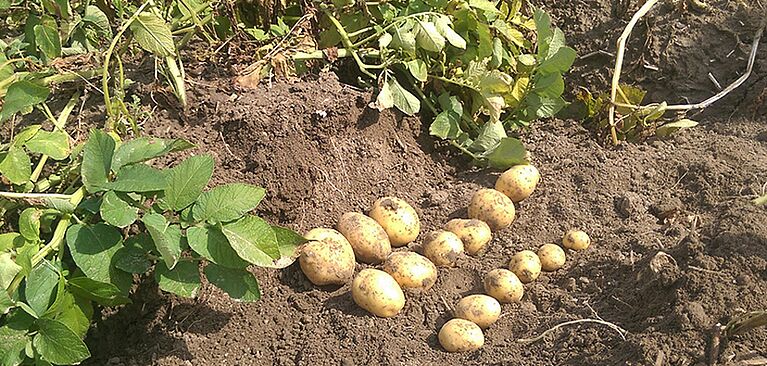Short days and cooler nights are perceived by potato plants as an indicative of coming winter, hence inducing tuber formation as a strategy for winter survival. Potato tubers remain dormant in soil during winter months, to be reactivated in the next spring and give rise a new plant. Shorter day lengths or longer nights are a strict requirement for tuber formation in wild potato landraces, whereas mutations in the earliness locus evade this strict day length control and lead to cultivars forming tubers in long days. These variants appeared after potato introduction into Europe, whilst they were selected during modern potato breeding, most potato cultivars including at least one of the earliness alleles.
The earliness locus corresponds to truncated forms of CYCLING DOF FACTOR1 (StCDF1), a DOF domain protein found to repress expression of the CONSTANS (StCOLs) potato homologs. In potato, StCOLs activate the SP5G FT-like gene with a negative role on expression of the FT SP6A tuberigen, and thus tuberization. The shorter StCDF1 forms are in fact more stable than the full-length repressor and cause a constitutive suppression of StCOLs. This prevents SP5G gene expression and leads to activation of the SP6A tuberigen, even in non-inductive long days.
In a collaboration of partners from the University of Wageningen and the CRAG in Barcelona, the direct targets of StCDF1 were identified using a combination of RNA-Seq and DNA binding-affinity purification followed by high-throughput sequencing (DAP-Seq). StCDF1 was found in these studies to act not only as a canonical repressor of the day length pathway, but to modulate many targets involved in other biological processes, including several N metabolism-related genes. This clock output regulates diurnal expression of various nitrate and amino acid transporters, and strongly suppresses NITRATE REDUCTASE (NR/NIA), a limiting enzyme in nitrate assimilation that in potato is encoded by a single locus. This observation reveals that the earliness locus, facilitating tuber formation in long days, negatively affect nitrogen use efficiency (NUE), thus making modern potato cultivars more dependent on nitrate fertilizers for high tuber yields.
The findings of this research indicate that removing the StCDF1-binding sites from the potato NIA1 promoter or introducing additional NIA2 copies from other plants hold significant promise for enhancing potato nitrate usage efficiency.

